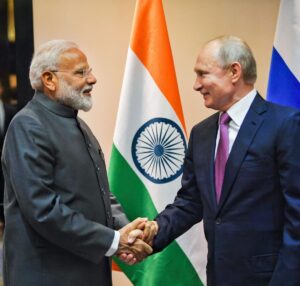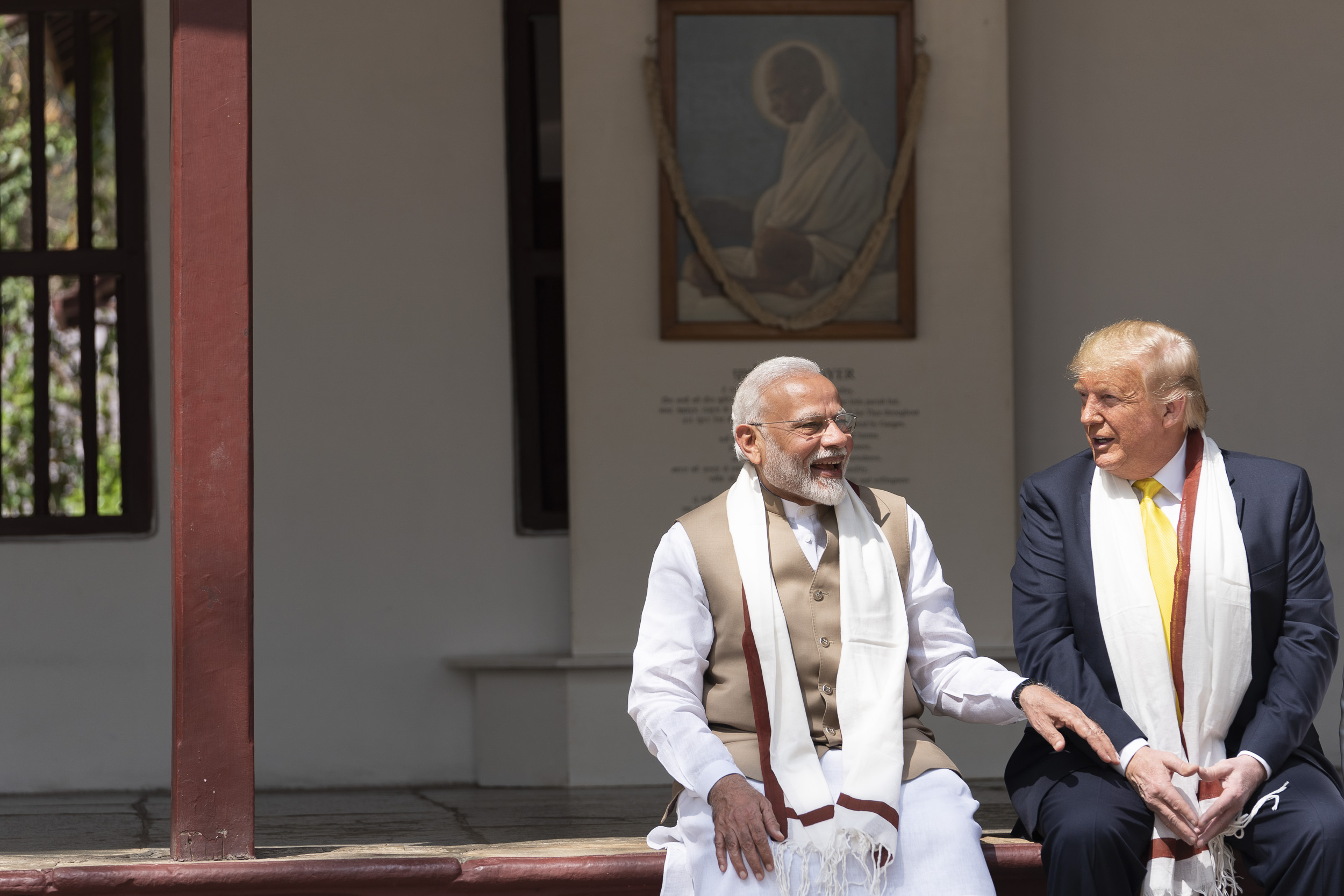India Rejects President Trump Tariff Pressure, Pledges to Continue Purchasing Russian Oil
India is now facing a 50% import tariff against the majority of their goods (electronics and pharmaceuticals exempted). However, Indian Prime Minister Narendra Modi has vowed not to yield to the pressure. Modi said the world was witnessing a “politics of economic selfishness.”
For approximately a decade many western countries including the U.S. have heaped effusive praise on India as corporations viewed the massive Indian population, the world’s largest democracy, as both workers and consumers. However, after the western sanctions against Russia were delivered, India -a BRICS nation- began pulling back from western alignment and influence.
Western sanctions map against Russia (yellow = agree with USA).
What we are witnessing now is one of the ramifications of the U.S. forcefully putting an “us or them” aspect into the strategic economic relationship, where “them” is Russia. Currently, India is not flinching.
One could make the argument that undeveloped regions in Brazil, Russia, India, China and South Africa (BRICS) contain the majority of the valuable rare earth minerals and magnets the ‘western’ nations need for manufacturing. BRICS has a pressure point to apply leverage, but no global trade currency, if the trade conflict escalates.
INDIA – Steep U.S. tariffs on a range of Indian products took effect Wednesday, threatening a serious blow to India’s overseas trade in its largest export market.
 President Donald Trump had initially announced a 25% tariff on Indian goods. But earlier this month he signed an executive order imposing an additional 25% tariff due to India’s purchases of Russian oil, bringing the combined tariffs imposed by the U.S. on its ally to 50%.
President Donald Trump had initially announced a 25% tariff on Indian goods. But earlier this month he signed an executive order imposing an additional 25% tariff due to India’s purchases of Russian oil, bringing the combined tariffs imposed by the U.S. on its ally to 50%.
The Indian government estimates the tariffs will impact $48.2 billion worth of exports. Officials have warned the new duties could make shipments to the U.S. commercially unviable, triggering job losses and slower economic growth.
India–U.S. trade relations have expanded in recent years but remain vulnerable to disputes over market access and domestic political pressures. India is one of the fastest-growing major global economies and it may face a slowdown as a result.
Estimates by New Delhi-based think tank Global Trade Research Initiative suggest labor-intensive sectors such as textiles, gems and jewelry, leather goods, food and automobiles will be hit hardest.
“The new tariff regime is a strategic shock that threatens to wipe out India’s long-established presence in the U.S., causing unemployment in export-driven hubs and weakening its role in the industrial value chain,” said Ajay Srivastava, the think tank’s founder and a former Indian trade official. (read more)
Keep in mind, India is a very poor albeit populated country with the average person living substantially below the poverty line. That sounds like bad news for India until you realize if they lose export trade to the USA, the majority of Indians will not notice the difference in their life.
Politically President Trump and Prime Minister Narendra Modi always appeared to have a very good relationship. However, on the issue of sanctions against Russia, President Trump is stepping into the middle of the BRICS relationship.
Modi feels strong due to a decade of effusive praise from all countries. Trump feels strong due to current effusive praise from all countries. Two hippos are facing each other.
There are multiple dynamics at play including President Trump’s Indo-Pacific strategy, a counterbalance to the influence of China, which is dependent on India. Prime Minister Modi appears to be calling President Trump’s bluff.






Post a Comment